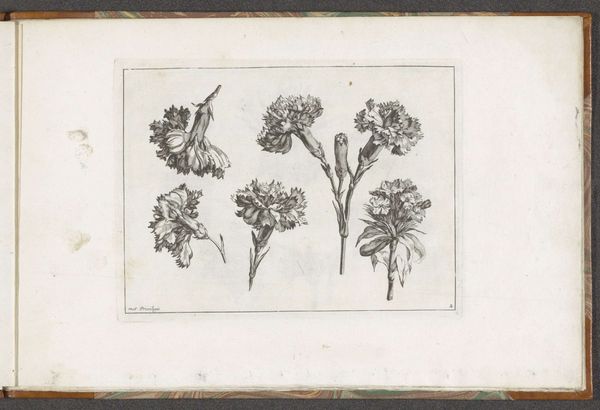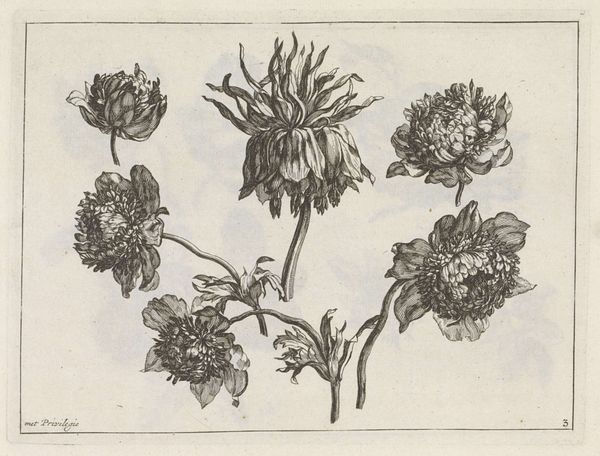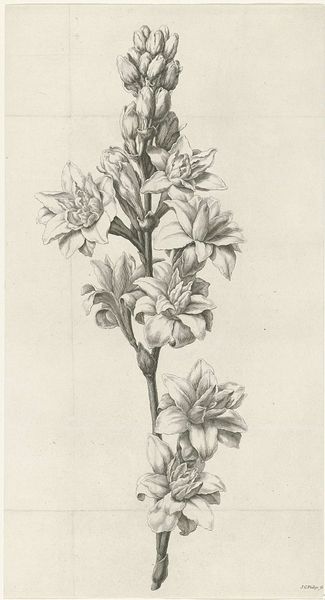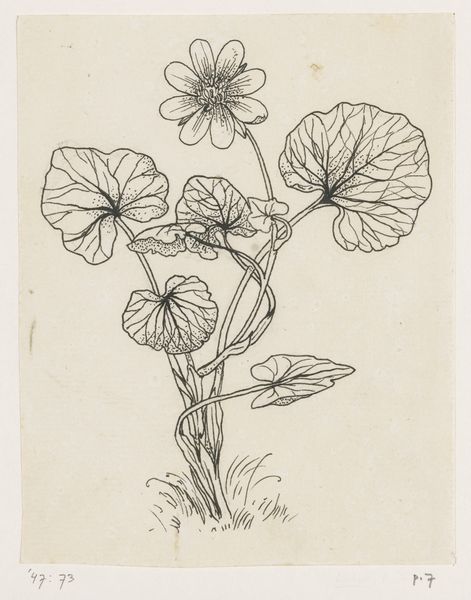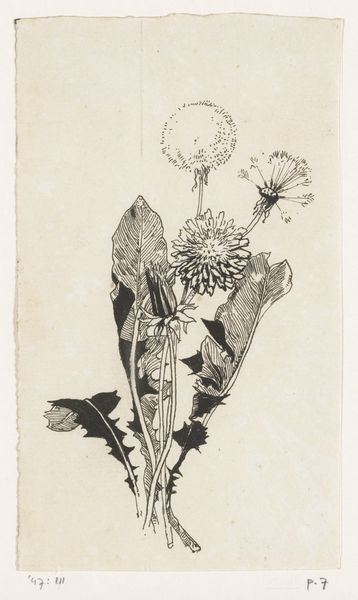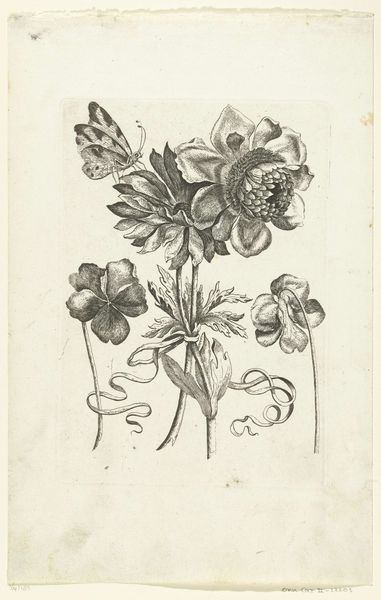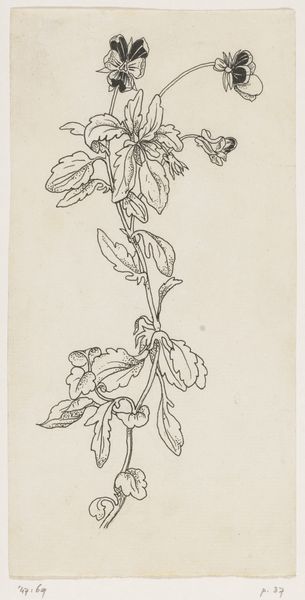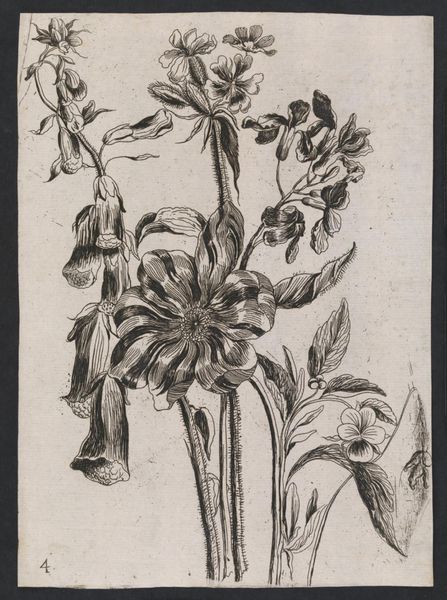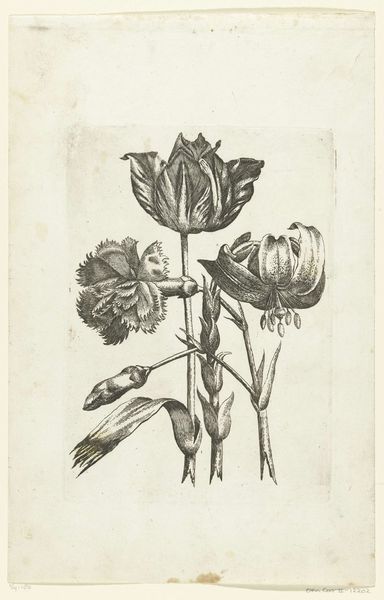
print, etching
# print
#
etching
#
form
#
line
#
realism
Dimensions: plate: 45.4 x 30.5 cm (17 7/8 x 12 in.) page size: 52 x 35.5 cm (20 1/2 x 14 in.)
Copyright: National Gallery of Art: CC0 1.0
Curator: Here we have Jim Dine's "Carnation" from 1984, rendered as an etching. What are your initial thoughts? Editor: Stark. Those stark lines against the etched ground create a somewhat unsettling yet beautiful composition. It almost feels like a memento mori. Curator: The decision to use etching is significant. It's a process requiring careful preparation of the plate, the deliberate action of acid biting into the metal, and the physical labor of printing. Each impression, a unique product of that industrial-feeling process. Editor: I'm drawn to the choice of carnations themselves. They've carried such varied symbolic weight throughout history, from love and devotion to warnings and even mourning. The Victorians, especially, had a language of flowers, and carnations held a prominent place within that. Curator: Indeed, and the linear style employed by Dine focuses on the construction of the flower—the mechanics of the bloom, if you will. He reduces it to essential lines. Almost blueprint-like, deconstructing what constitutes the idea of "flower." Editor: And consider the bud, presented unopened. Is it hope, potential unrealized, or perhaps even the closed-off nature of grief? The context, of course, deeply impacts this, especially thinking about Dine’s broader body of work and personal losses. Curator: Good point. Etching, as a printmaking method, enabled Dine to circulate these images widely. To make these symbols more accessible, and almost democratize the process of grief or love they can come to represent. Editor: So, it’s not merely an aesthetic exercise. By producing an etching, Dine could explore how readily such symbols are adopted and adapted by various cultures to express profound emotions, like sorrow. Curator: Precisely. The choice of etching highlights how deeply the work engages in this artistic cycle. Editor: It is a cycle. Thank you; I’ll not look at carnations in quite the same way now! Curator: Nor I. A renewed focus on production changes my experience of these symbols as well.
Comments
No comments
Be the first to comment and join the conversation on the ultimate creative platform.
